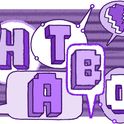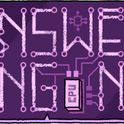Stars in their eyes: an interactive project, Galaxy Zoo, lets amateurs join in the huge task of classifying millions of galaxies
During the 1660s, the newly-founded Royal Society became a focus for scientific dialogue and a clearing house for ideas. Its secretary, Henry Oldenburg, wrote and received hundreds of letters from all over Europe on all aspects of “natural philosophy”—what we would now call science.
Oldenburg soon decided that letters were not the most efficient way to communicate with his international network and in 1665 he started a journal, Philosophical Transactions of the Royal Society, which has been published ever since. Over the centuries it has included Isaac Newton’s researches on light, Benjamin Franklin’s experiments on lightning and a report on Volta’s first battery. It set the style for the tens of thousands of academic journals published today—what scientists call “the literature.” Journals were plainly a real advance in the 1660s: a step change in the efficiency of communication across Europe. But it’s equally clear in the 2010s that printed journals are anachronistic. So what should replace them?
Like so many other publishers, we at the Royal Society are trying to persuade subscribers to our dozen journals to drop the print versions in favour of online editions. Apart from the benefits in terms of carbon footprint and cost-saving, the online editions offer readers more in terms of searching, commenting, linking, supplementary datasets, images and films. Most readers prefer them for these reasons. We are also exploring applications for mobile phones and other handheld devices.
But the benefits of online journals extend beyond cost-saving and reader satisfaction. They are changing the way scientific research is done. For a start, it is now much easier to find published research, initially via specialist search engines such as PubMed for medical science, and later using more general tools (Google accounts for almost 60 per cent of referrals to the journals on the RS website).
Of course, even electronic journals cost money to produce: the costs of editing, and of organising peer review by expert referees must still be covered. So either the readers have to pay (individually or via their institutional libraries), or the authors (or their employers) have to. Much as before, this leaves problems for independent authors not supported by grants or a commercial employer. In universities, the online journal archive Jstor has been a boon. But lone researchers still have to pay for it and other resources. Publishers must aim to get as close as they can to open access while balancing the books.
Some subjects are closer to the ideal model than others. My field—physics and astronomy—is fortunate to be there already. That’s not because the journals are open-access, but down to the well-organised web archive started in the 1990s by Paul Ginsparg, now at Cornell University. Most physicists and astronomers still submit papers to regular journals, but first put them on the archive in a version called a preprint—getting faster (and often better) feedback from readers of the archive than from the journal referee.
Thanks to Ginsparg, the public can read everything on superstring theory, but access in other fields continues to be an issue—particularly for scholars in the humanities, who remain excluded from culturally important and more accessible work on history and literature. In this context, perhaps Google’s project to digitise millions of books should be welcomed as a step towards a universally accessible library, as comprehensive as the British Library or the Library of Congress.
Most scientists still value the peer review provided by “traditional” journals, and want their papers to appear in one for accreditation and archival reasons, not to get more readers. But this accreditation role may one day be trumped by a more informal system of quality rating, like the grading of restaurants or films by critics, blogs, or bylined Amazon-style reviews.
Meanwhile, the open access issue is being overtaken by new media developments. Traditional publications are no longer the sole disseminators of results. Blogs and wikis are becoming a bigger part of the literature. And the web is not the only way in which computer networks are transforming science. Thanks to new software, we now have greatly enhanced capabilities to analyse huge data sets. Data mining, “mashing” and so on will be a new route to discoveries—indeed a new kind of science. Some discoveries will be made by “brute force” rather than by insight.
These discoveries, moreover, can now be made by people anywhere in the world. This has levelled the playing field between different countries, and between small and large institutions—and hugely broadened participation. When I was a student, I was fortunate to be in a big institute with a good library. What a contrast with someone in India, who would get journals months late, and wouldn’t get preprints at all. Similarly, in the old days, astronomical information was stored on delicate photographic plates: these were not easily accessible and were tiresome to analyse. Now, such data (and, likewise, large datasets in genetics or particle physics) can be accessed and downloaded anywhere. Today, experiments and natural events, such as tropical storms or the impact of a comet on Jupiter, can be followed in real time by anyone with a computer.
Science is also becoming a co-operative activity where amateurs can join in. The Galaxy Zoo project, for instance, allows the task of classifying millions of galaxies to be carried out by anyone. In biology, thousands of PlayStation 3 enthusiasts are exploring the way proteins form via the game Folding@home. Wiki-style activity is also catching on in maths. My Cambridge colleague Tim Gowers has a website where people collaborate to prove theorems (see “Go Figure,” Prospect, February 2010).
What will all of this mean for education? Traditional universities will survive insofar as they offer mentoring and personal contact to their students. But it’s less clear that there will be a future for the type of “mass university” that exists in places like Italy or India, where students are merely offered lectures (generally mediocre) in large classes with minimal feedback. Instead, the internet will offer access to a growing menu of outstanding lectures and courses. The Open University will extend globally, as will star lecturers, like the physicist Walter Lewin at MIT. The same opportunity is opening for the best classroom teachers too. The internet enables far wider participation in frontline science. More fundamentally, it is going to change how research is done, what might be discovered, and how students learn.
During the 1660s, the newly-founded Royal Society became a focus for scientific dialogue and a clearing house for ideas. Its secretary, Henry Oldenburg, wrote and received hundreds of letters from all over Europe on all aspects of “natural philosophy”—what we would now call science.
Oldenburg soon decided that letters were not the most efficient way to communicate with his international network and in 1665 he started a journal, Philosophical Transactions of the Royal Society, which has been published ever since. Over the centuries it has included Isaac Newton’s researches on light, Benjamin Franklin’s experiments on lightning and a report on Volta’s first battery. It set the style for the tens of thousands of academic journals published today—what scientists call “the literature.” Journals were plainly a real advance in the 1660s: a step change in the efficiency of communication across Europe. But it’s equally clear in the 2010s that printed journals are anachronistic. So what should replace them?
Like so many other publishers, we at the Royal Society are trying to persuade subscribers to our dozen journals to drop the print versions in favour of online editions. Apart from the benefits in terms of carbon footprint and cost-saving, the online editions offer readers more in terms of searching, commenting, linking, supplementary datasets, images and films. Most readers prefer them for these reasons. We are also exploring applications for mobile phones and other handheld devices.
But the benefits of online journals extend beyond cost-saving and reader satisfaction. They are changing the way scientific research is done. For a start, it is now much easier to find published research, initially via specialist search engines such as PubMed for medical science, and later using more general tools (Google accounts for almost 60 per cent of referrals to the journals on the RS website).
Of course, even electronic journals cost money to produce: the costs of editing, and of organising peer review by expert referees must still be covered. So either the readers have to pay (individually or via their institutional libraries), or the authors (or their employers) have to. Much as before, this leaves problems for independent authors not supported by grants or a commercial employer. In universities, the online journal archive Jstor has been a boon. But lone researchers still have to pay for it and other resources. Publishers must aim to get as close as they can to open access while balancing the books.
Some subjects are closer to the ideal model than others. My field—physics and astronomy—is fortunate to be there already. That’s not because the journals are open-access, but down to the well-organised web archive started in the 1990s by Paul Ginsparg, now at Cornell University. Most physicists and astronomers still submit papers to regular journals, but first put them on the archive in a version called a preprint—getting faster (and often better) feedback from readers of the archive than from the journal referee.
Thanks to Ginsparg, the public can read everything on superstring theory, but access in other fields continues to be an issue—particularly for scholars in the humanities, who remain excluded from culturally important and more accessible work on history and literature. In this context, perhaps Google’s project to digitise millions of books should be welcomed as a step towards a universally accessible library, as comprehensive as the British Library or the Library of Congress.
Most scientists still value the peer review provided by “traditional” journals, and want their papers to appear in one for accreditation and archival reasons, not to get more readers. But this accreditation role may one day be trumped by a more informal system of quality rating, like the grading of restaurants or films by critics, blogs, or bylined Amazon-style reviews.
Meanwhile, the open access issue is being overtaken by new media developments. Traditional publications are no longer the sole disseminators of results. Blogs and wikis are becoming a bigger part of the literature. And the web is not the only way in which computer networks are transforming science. Thanks to new software, we now have greatly enhanced capabilities to analyse huge data sets. Data mining, “mashing” and so on will be a new route to discoveries—indeed a new kind of science. Some discoveries will be made by “brute force” rather than by insight.
These discoveries, moreover, can now be made by people anywhere in the world. This has levelled the playing field between different countries, and between small and large institutions—and hugely broadened participation. When I was a student, I was fortunate to be in a big institute with a good library. What a contrast with someone in India, who would get journals months late, and wouldn’t get preprints at all. Similarly, in the old days, astronomical information was stored on delicate photographic plates: these were not easily accessible and were tiresome to analyse. Now, such data (and, likewise, large datasets in genetics or particle physics) can be accessed and downloaded anywhere. Today, experiments and natural events, such as tropical storms or the impact of a comet on Jupiter, can be followed in real time by anyone with a computer.
Science is also becoming a co-operative activity where amateurs can join in. The Galaxy Zoo project, for instance, allows the task of classifying millions of galaxies to be carried out by anyone. In biology, thousands of PlayStation 3 enthusiasts are exploring the way proteins form via the game Folding@home. Wiki-style activity is also catching on in maths. My Cambridge colleague Tim Gowers has a website where people collaborate to prove theorems (see “Go Figure,” Prospect, February 2010).
What will all of this mean for education? Traditional universities will survive insofar as they offer mentoring and personal contact to their students. But it’s less clear that there will be a future for the type of “mass university” that exists in places like Italy or India, where students are merely offered lectures (generally mediocre) in large classes with minimal feedback. Instead, the internet will offer access to a growing menu of outstanding lectures and courses. The Open University will extend globally, as will star lecturers, like the physicist Walter Lewin at MIT. The same opportunity is opening for the best classroom teachers too. The internet enables far wider participation in frontline science. More fundamentally, it is going to change how research is done, what might be discovered, and how students learn.












